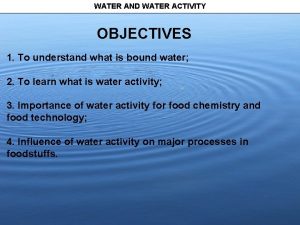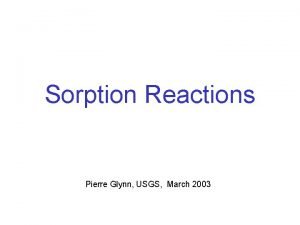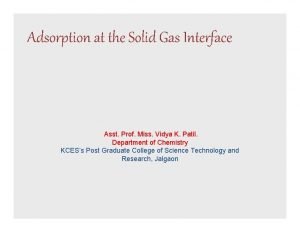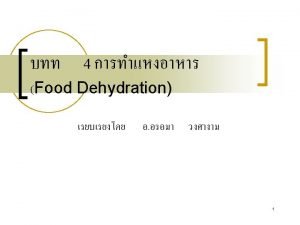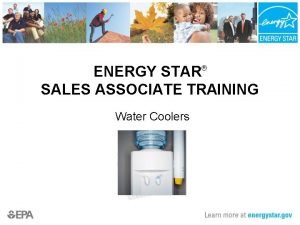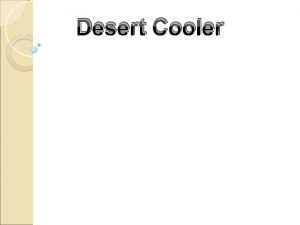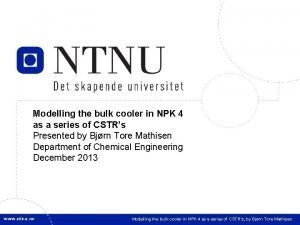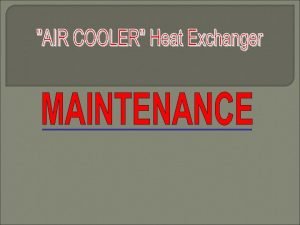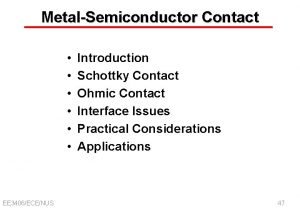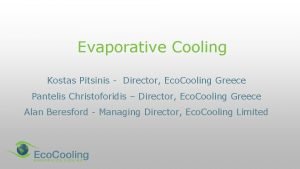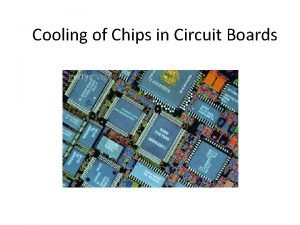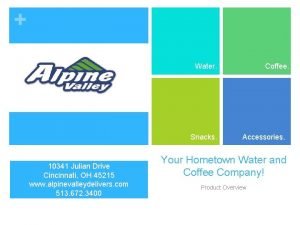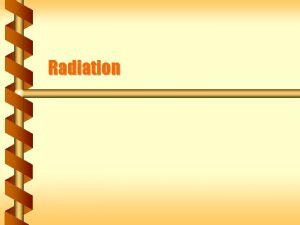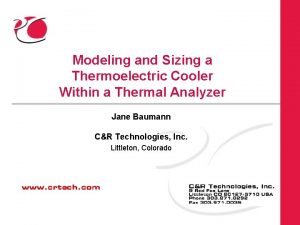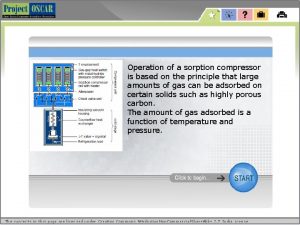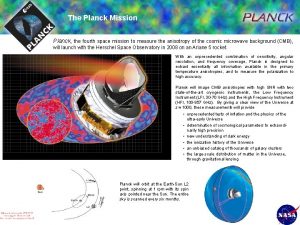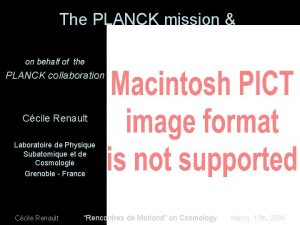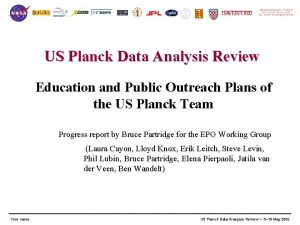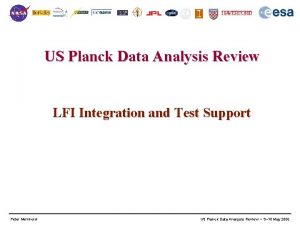US Planck Data Analysis Review Planck Sorption Cooler















- Slides: 15

US Planck Data Analysis Review Planck Sorption Cooler Lifetime and Operational Options Alfred Nash 9 May 2006 Jet Propulsion Laboratory Alfred Nash US Planck Data Analysis Review • 9– 10 May 2006

Outline Definitions Basic Cooler Operating Principles Lifetime Limiters Worst Case Lifetime Regeneration Nominal Lifetime Options State Machine Things to Consider Q&A Alfred Nash 2 US Planck Data Analysis Review • 9– 10 May 2006

Definitions Alfred Nash 3 US Planck Data Analysis Review • 9– 10 May 2006

Basic Cooler Operating Principles Cooling Power & Cold End Temperature Cooling Power – Principle dependencies Ø mdot(∆P)∆H(∆P, TVG 3) – 3 rd V-Groove Temperature: TEMP_VG 3 » Cooling Power Increases with Decreasing 3 rd V-Groove Temp – Pressure » Desorption Power: POWER_DESORB – Does NOT depend on Ø Compressor Bed Switching Cycle Time: TIME_CYCLE – Not rate of compression Cold End Temperature – Principle dependency Ø Warm Radiator Temperature: TEMP_RAD – Via Liquid/Vapor Pressure/Temperature Curve » Compressor absorption pressure sets cold end temperature (including line drop offset) – Weak dependency Ø Mass flow (pressure drop in line, absorption kinetics) – Does NOT depend on Ø 3 rd V-Groove Temperature: TEMP_VG 3 Alfred Nash 4 US Planck Data Analysis Review • 9– 10 May 2006

Basic Cooler Operating Principles Cooler Cycle Time Compressor – Array of Elements, “T” with check valves into high and low pressure manifolds Ø High Pressure Manifold includes High Pressure Stabilization Tanks (HPSTs) - “Plenums” to smooth flow Ø Low Pressure Manifold includes Low Pressure Storage Bed (LPSB) where charge is stored at subatmospheric pressures prior to cooler activation – Compressor provides continuous refrigerant flow with minimized pressure ripple. – Six Beds Cycle Through Four Steps – Mounts on Service Module Radiator Panel – Decreasing Compressor Bed Switching Cycle Time: TIME_CYCLE does NOT increase mass flow Simplified 6 Bed Operation of Cooler 0 -667 sec Heat Desorb Cool/ Absorb T t 667 - 1334 sec Desorb Cool/ Absorb Heat T t Alfred Nash 5 US Planck Data Analysis Review • 9– 10 May 2006

Life Limiting Factors in Sorption Cooler P Capacity/Cycle Tdes La. Ni 4. 8 Sn 0. 2 Degradation (dotted lines) – Pressure for fixed temperature (achieved via power) decreases Tabs Ø Overcome by increasing desorption power – Capacity (flat width) decreases – Overcome with shorter cooler cycles – 8, 300 cycles results in 80% BOL capacity X – Recoverable by regeneration Ø High temperature, low pressure Gas Gap – Rate of permeation from sorbent bed into annular (closed) gap exponential with sorbent bed temperature. Ø Temperature Pressure Cooling Power – 315 scc H 2 capacity Alfred Nash 6 US Planck Data Analysis Review • 9– 10 May 2006

Worst Case Lifetime For the purpose of this discussion, we define worst case to be: – Warm Radiator Temperature: TEMP_RAD: 262 K – 3 rd V-Groove Temperature: TEMP_VG 3: 60 K – Combined Heat Lift Capacity from the Instrument Interfaces: HEAT_LIFT: 836 m. W – Compressor Bed Cycle Time: TIME_CYCLE : 667 s – Input Power Limit: 470 W For the operating scenario communicated at SCS IQR Co-Location – “JPL and ESA (AH) will put together the benchmark scenario with these boundary conditions, including the details of the test durations per cooler at JPL, the expected test durations per cooler at CSL and taking into account the duration of 7. 5 months per sky survey, 5 months to L 2 and 2 month PV phase prior to operation. – Operational iterations can be made with respect to this benchmark” Alfred Nash 7 US Planck Data Analysis Review • 9– 10 May 2006

Worst Case Lifetime Using the values above, the following scenario was recommended for operations of FM 1 and FM 2, post delivery, assuming worst case interface conditions of 60 K 3 rd V-Groove and 262 Warm Radiator for cooling of > 836 m. W within an input power allocation of 470 W. Ø Operate FM 1 for 25 days of testing at CSL, and performance of a “functional only” test of regeneration (no bed temperatures above 470 K). – Actual was 8 days Ø Operate FM 2 for ~10 days (including cool down of instruments) to confirm nominal cooler operation and perform steady state operation to allay any remaining concerns regarding potential further increases in input power. – Current plan is to operate FM 2 for one month Ø Turn on FM 2 for the last 20 days of the cruise phase to L 2 – This duration chosen to provide ~ 10% lifetime margin at switchover Ø Operate FM 2 for the 2 month PV Phase Ø Operate FM 2 for the first sky survey (7. 5 months) Ø Switchover from FM 2 to FM 1 (duration includes commissioning and cool down) Ø Operate FM 1 for the second sky survey (7. 5 months) Worst Case is NOT very likely – CQM Testing, 3 rd V-Groove Temperature: TEMP_VG 3 < 50 K – Warm radiator has “make up heater” Alfred Nash 8 US Planck Data Analysis Review • 9– 10 May 2006

Worst Case Lifetime Note: – FM 2 was delivered with more lifetime, but requiring more input power, because it was – Alfred Nash regenerated at JPL prior to delivery The planned functional test of regeneration of FM 1 during AIV will NOT increase the input power requirements 9 US Planck Data Analysis Review • 9– 10 May 2006

Regeneration The good news is – The La. Ni 4. 8 Sn 0. 2 Hydride within the sorption cooler can be fully regenerated for degradations of 20% or less, in situ, by a high temperature (670 K), low pressure (1 atm) cooler “cycle” Ø Low dissipation into warm radiator. The bad news is – The cooler was manufactured utilizing a high temperature bake out of the gas gaps of ~ 670 K, above the maximum expected operating temperature (475 K) at the time of manufacture – 60 W of methane parasitic is created in the gas gap during the first 2 hours of regeneration. Ø This is comparable to the BOL-EOL margin on power in the worst case – Diffusion of hydrogen into the gas gap during nominal operations limits the usefulness of regeneration in cases where the 3 rd v-groove is colder than 60 K. Alfred Nash 10 US Planck Data Analysis Review • 9– 10 May 2006

Nominal Lifetime Options “The Derivative of Lifetime With Respect to Everything Else” The Derivative of lifetime with respect to – Interface Parameters Ø 3 rd V-Groove Temperature: TEMP_VG 3 – <0 Ø Warm Radiator Temperature: TEMP_RAD – >0 – Performance Parameters Ø Combined Heat Lift Capacity from the Instrument Interfaces: HEAT_LIFT – <0 – Operational Parameters Ø Compressor Bed (switching) Cycle Time: TIME_CYCLE – Heat Up Power : POWER_HEATUP » <0 Ø Desorption Power: POWER_DESORB – Combined Heat Lift Capacity from the Instrument Interfaces: HEAT_LIFT » <0 Alfred Nash 11 US Planck Data Analysis Review • 9– 10 May 2006

Nominal Cases - First Estimates (FM 2) (~ 30 W less for FM 1) Gas Gap Actuator Capacity 1 year 2 year Power Capability=514 W 1 year 2 year 3 year 2 year Power Requirement=470 W 4. 3 year 2 year 3 year 1 year 4. 3 year 2 year 1 year Alfred Nash 12 US Planck Data Analysis Review • 9– 10 May 2006

State Machine Why – To obtain rough order of magnitude (ROM) estimates of operational parameter or performance boundaries under various state conditions To conduct trade studies of operational scenarios – What – It is Ø An Excel Workbook Ø Two modules – (Optimal) Operational parameters from performance desirements – Performance from operational parameters – It is NOT Ø An operations procedure generating machine Ø Lifetime calculator / optimizer How – Matrix of linear equations built from separate analytic models connect inputs and outputs Ø NOT 100% ACCURATE Who & Where – Developed by Al Nash at JPL When – In development (first release in testing/review within JPL) Alfred Nash 13 US Planck Data Analysis Review • 9– 10 May 2006

Things to Consider (A Partial List) Cruise Phase – Duration Ø Turn On – Heat Lift – Cycle Time PV Phase – Duration – Heat Lift – Cycle Time Sky Surveys – Duration – Nominal Heat Lift for V-Groove < 60 K – Cycle Time(s) Alfred Nash 14 US Planck Data Analysis Review • 9– 10 May 2006

Q&A Definitions Basic Cooler Operating Principles Lifetime Limiters Worst Case Lifetime Regeneration Nominal Lifetime Options State Machine Things to Consider Alfred Nash 15 US Planck Data Analysis Review • 9– 10 May 2006
 Moisture sorption isotherm
Moisture sorption isotherm Sorption definition
Sorption definition Sorption definition
Sorption definition The adsorption of solid gas interface can be explained by _
The adsorption of solid gas interface can be explained by _ Isotherm
Isotherm Addico water cooler
Addico water cooler What is meant by desert cooler
What is meant by desert cooler Npk cooler
Npk cooler Broken heat exchanger
Broken heat exchanger What is dangling bond
What is dangling bond Eco cooler test
Eco cooler test Air cooler printed circuit board
Air cooler printed circuit board Iceless cooler
Iceless cooler Innowave chiller 3
Innowave chiller 3 Hot metal contracts as it grows cooler
Hot metal contracts as it grows cooler Sinda fluint
Sinda fluint
